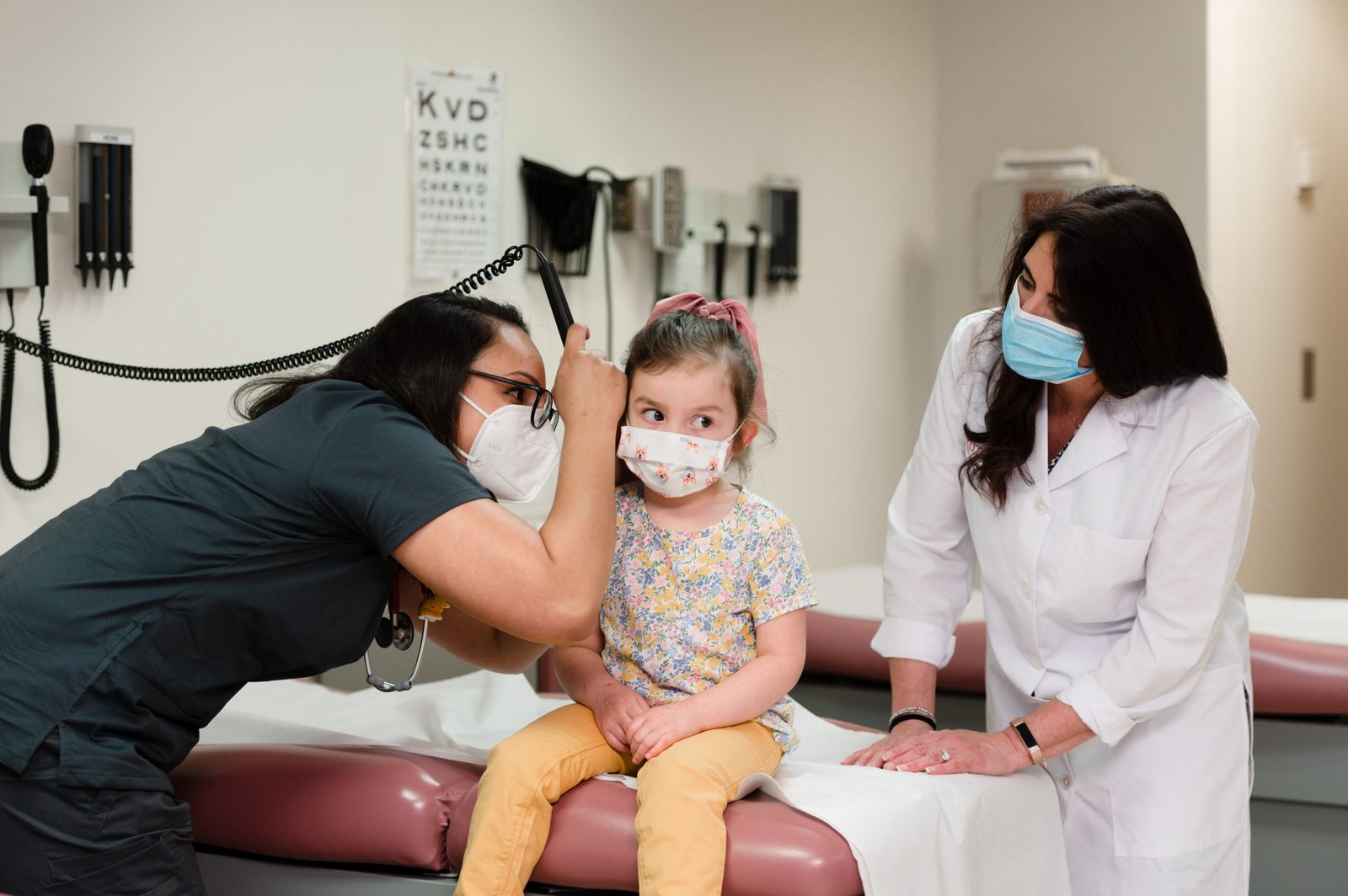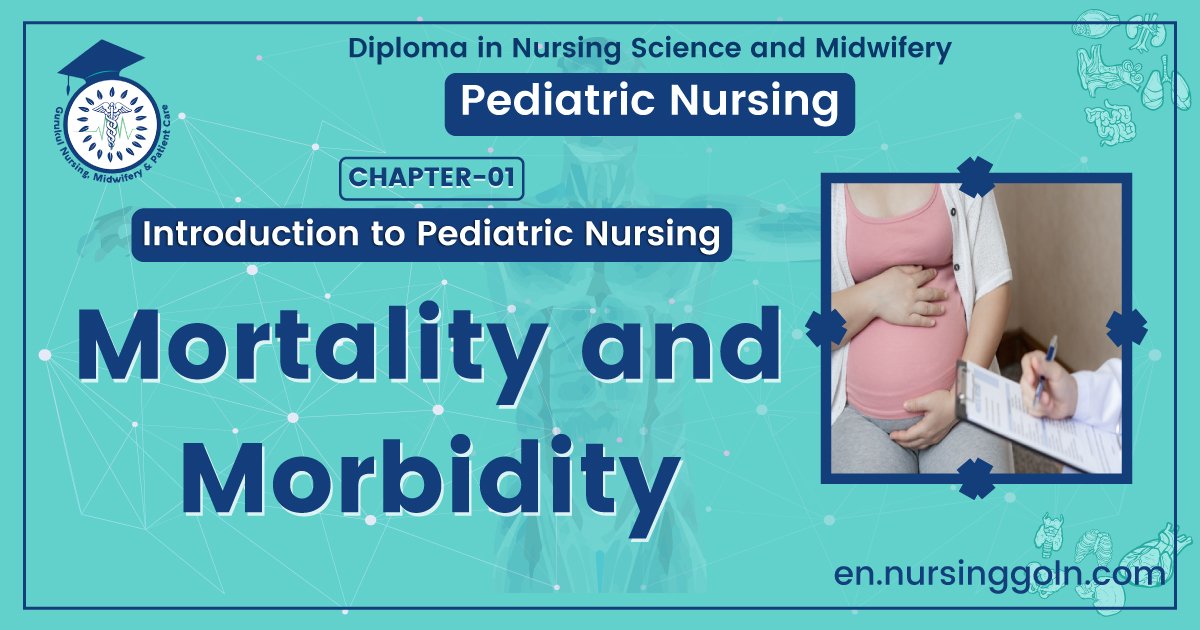Mortality and Morbidity – Health of the children has been considered as the vital importance to all societies because children are the basic resource for the future of humankind. Nursing care of children is concerned for both the health of the children and for the illnesses that affect their growth and development. The increasing complexity of medical and nursing science has created a need for special area of child care, i.e. pediatric nursing.
Pediatric nursing is the specialized area of nursing practice concerning the care of children during wellness and illness. It includes preventive, promotive, curative and rehabilitative care of children. It emphasizes on all round development of body, mind and spirit of the growing individual. Thus, pediatric nursing involves in giving assistance, care and support to the growing and developing children to achieve their individual potential for functioning with fullest capacity.
Mortality and Morbidity

Definition of Mortality:
Mortality is the term used for the number of people who died within a population. Mortality refers to the incidence of death or the number of deaths in a population.
Definition of Morbidity:
Morbidity refers to the state of being diseased or unhealthy within a population..
(Ref by-www.diffen.com)
Infant Mortality Rate:
Infant mortality rate is defined as the rate of infant death registered in a given years to the total number of live births registered in the same year, usually expressed as a rate per 1000 live births.
It is given by the formula:
IMR = Number of deaths of children under 1 year of age in an area during a year / Number of live births in the same area and same year x 1000
IMR-57/1000 live birth.
Neonatal Mortality Rate:
The ratio of neonatal deaths in a given year to the total number of live births in the same year; usually expressed as a rate per 1000
NMR- Number of deaths of children Under 28 days of age in a year / Total live births in the same year x 1000
Neonatal mortality rate 30/1000 live birth
The ratio of post-neonatal, paths in a given year to the total number of live births in the same year.

Post-neonatal mortality rate 133/ 1000 live birth
(Ref: K Park/25/567)
Definition of MMR:
It is the number of death of mother from pregnancy, delivery and puerperal causes during a calendar year per thousand of childbirth.
Calculation:
We can calculate MMR by following formula-
Total number of female deaths due to complications of pregnancy. child birth or within 6 weeks of delivery from ‘puerperal cause
MMR- in an area during a given year / Total number of live births in the same area in that year x 1000
Definition of Maternal Morbidity:
The WHO defines maternal morbidity as “a complication or illness that arises during gestation, birth or the puerperium, which affects the woman’s integrity, and physical or mental health, sometimes permanently. Causes can vary; some examples include obstetric complications, interventions, cultural practices or coercion”.
(Ref: K Park/23/557+ Prof. Latifa shamsuddin/2/235)
Infant Mortality Rate:
Infant mortality rate is defined as the ratio of infant death registered in a given years to the total number of live births registered in the same year, usually expressed as a rate per 1000 live births.
It is given by the formula:
IMR = Number of deaths under one year of age in an area during a year / Number of live births in the same area and same year x 1000
(Ref: K Park/23/567)
Causes of IMR in Bangladesh:
A. Neonatal mortality (0-4 Weeks)
- Low birth weight
- Birth injury and difficult labor
- Congenital anomalies
- Hemolytic disease of newborn
- Conditions of placenta and cord
- Diarrheal disease
- Acute respiratory infection (ARI)
- Tetanus
- Measles
- Septicemia
- Whooping cough
- Other: Anemia, malnutrition and vitamin deficiency
B. Post neonatal mortality (1-12 Month):
- Diarrheal disease
- Acute respiratory infection (ARI)
- Other communicable disease
- Malnutrition
- Congenital anomalies
- Accidents
(Ref: K Park/24/605)
Preventive Measure of IMR:
A. Certain important measure
- Low birth rate
- Highest literacy rate, specially family literacy
- Improvement of primary health care
B. Other preventive measure
- Prenatal nutrition
- Prevention of infections, eg- six killer disease.
- Exclusive breast feeding
- Growth monitoring
- Family planning
- Environmental sanitation
- Simple hygiene measure.
- Socio economic development

FOR EQ
A. Identification of high risk parents
- Maternal age: Mothers younger than 18 have an increased risk of delivering a low- birth weight infant.
- Intrauterine infections: Several organisms can produce congenital anomalies as well as increase the risk of low-birth weight infants.
- Preexisting maternal illness: Such conditions include heart, kidney and thyroid disease; diabetes mellitus, hypertension; and substance abuse. Early detection and aggressive management of maternal illness can reduce the toll of infant loss.
- Maternal history of reproductive problems: Women who have experienced adverse conditions during prior pregnancies (e.g, premature labour, vaginal bleeding. hypertension, miscarriage, and delivery of a low-birth weight or still born infant) have an increased risk of adverse outcomes in subsequent pregnancies.
- Family history of hereditary disease: The presence of such a disease may suggest the need for screening and special management.
B. Prevention of unwanted pregnancies among high-risk parents:
- It may involve genetic counseling, sex education and family planning.
C. Management of high-risk pregnancies: It includes-
- Early antenatal care (within the first trimester).
- Regular screening and monitoring throughout pregnancy.
- Provision of medical, nutrition and social services appropriate to the level of risk
- Delivery in a hospital equipped to manage potential problems related to obstetric risk factors.
- Monitoring and treatment of the newborn for problem related to obstetric risk factors.
D. Management of high-risk newborn includes;’
- Immediate access to an intensive care nursery
- Continued medical, social and nutritional monitoring following discharge from the intensive care nursery
Factors Associated With Infant Mortality And Morbidity:
A. Biological factors
- Birth weight: Babies of low birth weight (under 2.5 kg) and high birth weight (over 4 kg) are at special risk
- Age of the mother: Infant mortality rates are greater when the mother is either very young (below the age of 19 years) or relatively older (over 30 years)
- Birth order: The risk of infant mortality escalates after the third birth
- Birth spacing
- Multiple births
- Family size
- High fertility
B. Economic factors
- Poor economic status

C. Cultural and social factors
- Breast-feeding
- Religion and caste
- Early marriages: The baby of teen-age mother has the highest risk for neonatal and
- post-neonatal mortality
- Sex of the child
- Quality of mothering
- Maternal education
- Quality of health care
- Broken families: Infant mortality tends to be high where the mother or father has died or separated.
- Brutal habits and customs
- Illegitimacy
- The indigenous dai
- Bad environmental sanitation
(Ref by-K. Park/25 605)
Read more:
